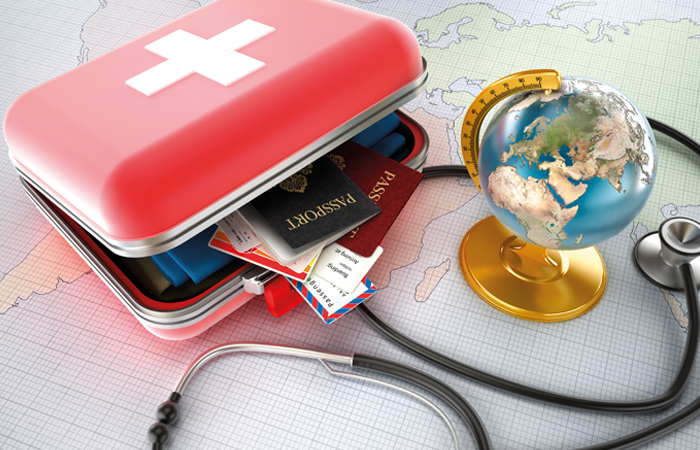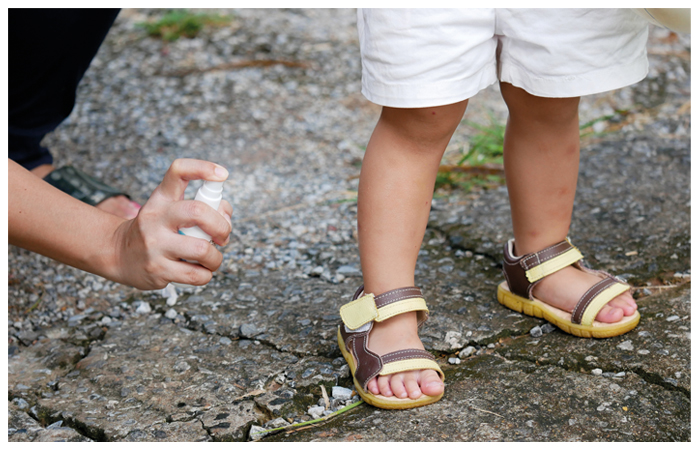A mighty bite
In Conditions
Follow this topic
Bookmark
Record learning outcomes
A new addition to the OTC antimalarial armoury provides a great opportunity to brush up on this important aspect of travel health
Tickets, money, passport… these are generally the first three items on the list of someone who is going abroad. If the destination is hot and sunny, chances are that a swimsuit, flip-flops and suncream will soon find their way into the luggage too. But insect repellent and antimalarials – how long before they cross the traveller’s mind?

If they don’t, they should do, certainly if the trip is going outside Europe: over 1,600 cases of malaria were reported in the UK in 2016, and six people died as a result. Worldwide in the same year, there were an estimated 216 million cases of the disease in 91 countries – a rise of five million cases on 2015 – and nearly 450,000 deaths.
What is malaria?
Malaria is a disease caused by parasites that are transmitted to people via the bites of infected mosquitoes. Five parasites in the Plasmodium family can cause malaria, but the two that pose the greatest threat are P. falciparum, which is prevalent in Africa and is responsible for most malaria-related deaths, and P. vivax, which dominates in the rest of the world.
Someone who contracts malaria usually develops a fever, chills and headache around seven to 18 days after the bite, and may experience vomiting, diarrhoea and muscle pains. However, because these symptoms can be due to a wide range of illnesses, the individual often does not realise that they have malaria. In some forms of the disease, the symptoms go in 48-hour cycles, with the patient first feeling cold and shivery, then spiking a fever that is accompanied by severe sweating and leaves them feeling exhausted. As an added complication, in some cases it can take up to a year or even longer for any signs of malaria to appear, which makes diagnosis even trickier.
And prompt diagnosis is important. If left unchecked, the parasite starts to destroy red blood cells, causing severe anaemia or even rupture of the spleen, and can cause the liver and kidneys to fail, fluid to build up in the lungs, and swelling of the brain, which can result in seizures, coma and permanent brain damage. Pregnant women are particularly vulnerable, with malaria increasing the risk of serious complications, such as miscarriage, poor foetal growth, premature birth, still birth, and maternal death.
Know your ABCD
While this sounds all gloom and doom, there is good news: malaria is both preventable and curable. In terms of the former, pharmacy staff are perfectly placed to help, says Farah Ali, general manager at Perrigo’s centre of excellence, Warman-Freed Pharmacy: “They are frontline NHS staff so have the opportunity to bring up the topic with customers when they walk in. But it is vital to be as up to date as possible, particularly as nowadays information is so readily available on the internet that people usually walk in with some prior knowledge.”
Farah says that training resources provided by manufacturers are a good starting point for staff to stay on top of their understanding of this important therapeutic area. She adds that it is sensible to have written materials to hand – for example, relevant articles from trade magazines – as well as bookmarked websites such as TravelHealthPro (which is provided by the National Travel Health Network and Centre (NaTHNaC)) and Health Protection Scotland’s FitForTravel, plus the National Pharmacy Association’s portal to refer to.
When talking to customers about malaria, remember the ABCD approach: Awareness, Bite avoidance, Chemoprophylaxis and Diagnosis. In-store displays are a good way to raise awareness, says Bernadette Brown, pharmacist proprietor of Cadham Pharmacy in Glenrothes: “We installed video screens when we had a refit, and use them to run videos on the risk of malaria.” Other ways to achieve the same means include window and in-store displays, particularly at this time of year as customers start thinking about going away in earnest, point of sale materials, posters, and leaflets that can double up as bag stuffers.
Bernadette adds that the introduction of Maloff Protect – an OTC version of the antimalarial Malarone (atovaquone/ proguanil) – has helped raised the profile of the disease: “Not everyone has or makes the time to come to a travel clinic, so having this as an option, and having everyone completely trained up on it, means that this group of patients doesn’t lose out and instead can get amazing advice and protection.”

DEETails
In terms of bite avoidance, Mhairi Spiers, pharmacist proprietor of Hogarth Pharmacy and Travel Clinic in Glasgow, advises that pharmacies focus on insect repellents: “We sell a lot of DEET-based products, but find that people seem to prefer to buy equipment such as mosquito nets from outdoor shops or online retailers.” (See panel below). Farah builds on the topic, saying: “Other bite avoidance measures that people can take are wearing loose, long-sleeved clothing, using air conditioning in cars and accommodation, and making sure doors and windows are closed at night.”
As there is no vaccine against malaria, chemoprophylaxis provides a way for individuals to reduce their risk of contracting the disease if their bite avoidance measures are not 100 per cent effective. While recommending antimalarials is usually something that the pharmacist does, as it can be clinically complex and several are prescription-only, Bernadette says team members have an essential role in the travel clinic she runs: “In the initial steps of the process, I rely on my staff to identify suitable patients and get key information.” This includes not just the destination, but also their medical and vaccination history. Bernadette continues: “They do an awesome job, so by the time the patient gets to me – whether they have walked in or made an appointment – I have everything I need.”
Antimalarials bring with them a few issues. The first is the range: customers may have used a certain product in the past and want it again, but it may not be appropriate for the place they are visiting, partly due to the emergence of resistant parasites over the last couple of decades. Farah says: “Go through the treatment, explaining the reasons behind the regimen… they may not be aware that different drugs are used in different locations, or may not be aware of newer medicines.”
It is sensible to check if customers have any reservations about the exact chemoprophylaxis they have been recommended. Farah highlights mefloquine – which can only be dispensed against a prescription or as part of a patient group direction (PGD) – as a prime example: “Some of the side effects people have experienced have led to it getting bad coverage in the media, but if it is the best option for that patient, I’d give the facts about its appropriateness, highlight the essential advice points and advise them to come back if they experience anything unusual.” Mhairi is in agreement: “The side effects are the reason it is started earlier than other antimalarials, and means the patient has time while they are still in the UK to switch to something else if it doesn’t go well for them. But for others, it’s a very good antimalarial and the fact that it only needs to be taken once a week is a big advantage.”
Dosing in general is another area that needs broaching, as malaria chemoprophylaxis must be started before travel, continued while in the area where the disease is endemic, and for a set period after leaving, with the number of days or weeks ahead of and after departure being dictated by the product. There may be time differences to be taken into consideration, as the medication is best taken at the same time each day. Mhairi states: “There is a lot of information to provide when giving antimalarials, but dosing should be a big focus for pharmacy staff.”
Another potential stumbling block is palatability, due to most antimalarials being based on quinine, which is notoriously bitter in flavour. This can be especially tricky with children, says Farah: “Parents know their kids best, so find out what is likely to work for them. For example, it might be drinking squash before and afterwards, putting tablets into yogurt to mask the flavour, or choosing a time of day that they associate with taking medication so they are more accepting.”
DEET and other repellents

The insect repellent DEET – diethyltoluamide – has been around for more than half a century, and has proved to be very effective. It is available in many formulations and concentrations, but generally, a product containing 20 per cent DEET can be expected to provide protection for between one and three hours, 30 per cent for up to six hours and 50 per cent for up to 12 hours; there is no further increase in duration of protection beyond this.
Evidence suggests that no harm befalls pretty much all who use DEET in concentrations of up to 50 per cent, including babies aged over two months, and pregnant and breastfeeding women, but it is best to check product packaging as some manufacturers have put in place additional restrictions. Contact with the eyes and mouth should be avoided (applying to hands and then to the face minimises the risk), and repellents should be reapplied at regular intervals, particularly after swimming, in hot humid conditions when sweating is more likely, and after applying sunscreen.
It is worth noting that while DEET can reduce the effectiveness of sunscreen – so SPF 30-50 products should be used to counteract this – the same is not true in reverse. It can also destroy artificial fibres, so if being used on clothing, they should be made of natural textiles. Hands should be washed after application and insect repellent should be removed with soap and water when it is no longer required.
Anyone who prefers to not use DEET-based products should opt for formulations containing picardin (at a minimum of 20 per cent concentration) or lemon eucalyptus, also known as p-methane 3,8 diol or PMD, which confers around the same amount of protection as 15 per cent DEET. Measures that are not recommended include repellents containing citronella oil, tea tree oil or geranium, supplements such as those containing garlic, vitamin B12 or vitamin B1, ultrasonic devices, homeopathic remedies and bath oils.
Package offer
While malaria is clearly an important topic to bring up with customers who are going abroad, it is just part of the package that community pharmacy can offer. Mhairi comments: “Support staff are the first people customers see when they come in, and even if they are buying something completely unrelated, they have conversations with them about what they are doing and where they are going. If they mention going away, take the opportunity to ask ‘have you thought about what you’ll need to take with you?’ and talk about antimalarials, the vaccinations they might need and sun protection, alongside other travel health products such as diarrhoea preparations and antihistamines.”
Bernadette points out that this holistic approach should extend beyond what is offered to the public and embrace the way the business is run. “Training is vital, as is enthusiasm, but also making the rest of the business as streamlined as possible. For example, we have invested in a dispensing robot which frees up the staff and means they have time to really talk to everyone who comes in the pharmacy. This, in turn, means the pharmacist can focus on the more difficult clinical aspects of patient care.”
This quickly creates a virtuous circle, in which staff get more satisfaction in their roles, and customers get excellent advice and are more likely to return, which has a positive effect on the bottom line. In this situation, and in a world where outcomes are everything, everyone benefits.
For more information
- Government guidance on malaria, including links to reports on UK cases of malaria
- The World Health Organization has a wealth of information on malaria
- NaTHNac’s TravelHealthPro site
- Health Protection Scotland’s FitForTravel
- NHS Choices is a good first stop for anyone wanting to know a bit more about malaria
- Details of the newest OTC antimalarial are available from Maloff Protect and further information can be found in TM's CPD e-learning module.
Over 1,600 cases of malaria were reported in the UK in 2016, and six people died as a result
